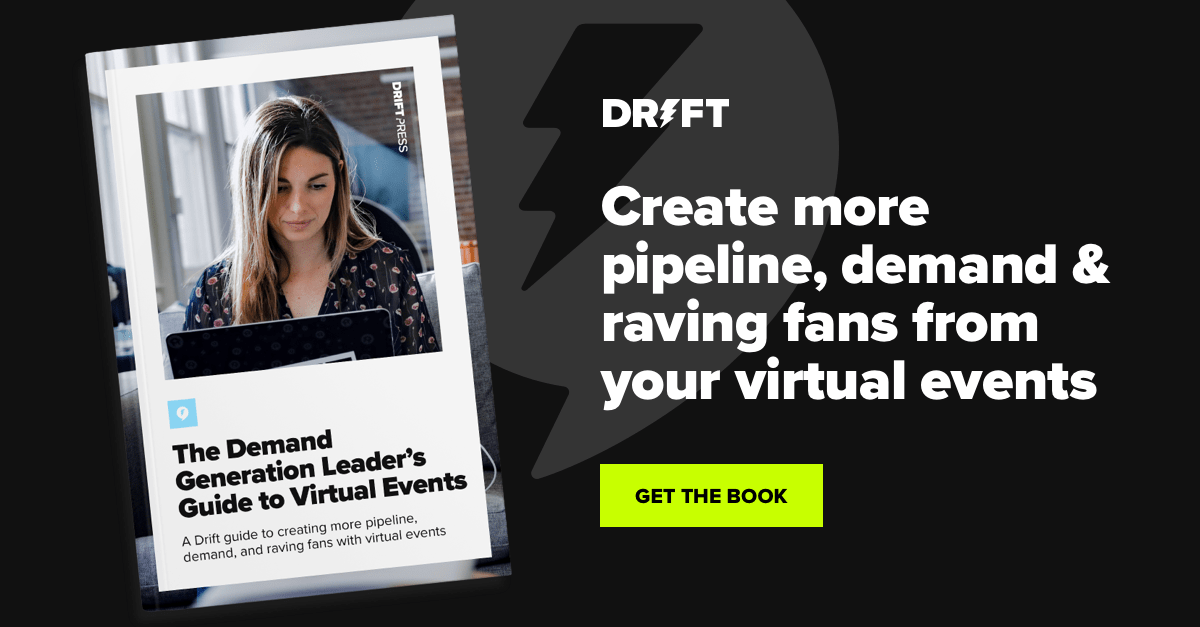While plenty of companies are eager to host in-person events, many companies will experiment with a hybrid event model that allows them to cater to people who want to travel and those who want to stay home.
Semi-virtual or all-virtual events will remain popular because of the convenience for attendees. You can learn new strategies and meet new people without ironing your clothes, catching a plane, or sleeping in a hotel. And what’s not to love about that?
But here’s the thing. B2B virtual events are everywhere.
So how do you get yours to stand out? How do you make people excited to sign up and show up?
After running five RevGrowths – and achieving an 86% conversion rate on our recent registration page – we’ve learned some things about creating landing pages for virtual events and driving the right traffic to them.
Set Goals for All Registrants and ICP Registrants
Goal setting is an essential part of virtual events planning. But your goals need to be meaningful and impactful.
That’s why we not only set a goal for overall registrants, but also registrants that match our ideal customer profile (ICP), whether these are leads or current customers. We check out the company details for all of our registrants and check how many match our ICP.
Typically, about 15-20% of registrants will match our ICP since we target medium and large enterprises. If your target is small businesses, that percentage might be higher. Set a goal for each type of registration to make sure that your marching towards goals that will impact your brand and your bottom line.
You Can’t Ignore the Quality of the Event
What comes next? I’ll tell you right now – you can’t just skip to the branding decisions for your event (like copy and design) without addressing the elephant in the room: the quality of your event. Is your event attendable?
Get Ahead of Industry Conversations
It’s not always easy to teach experts something new. You don’t want to offer beginner or basic content. You want your target audience to know that the event is worth their time.
That’s why we use titles like “Everything you need to move beyond ABM” instead of things like “How to do ABM right,” which could be better for blog posts and other top-of-funnel content.
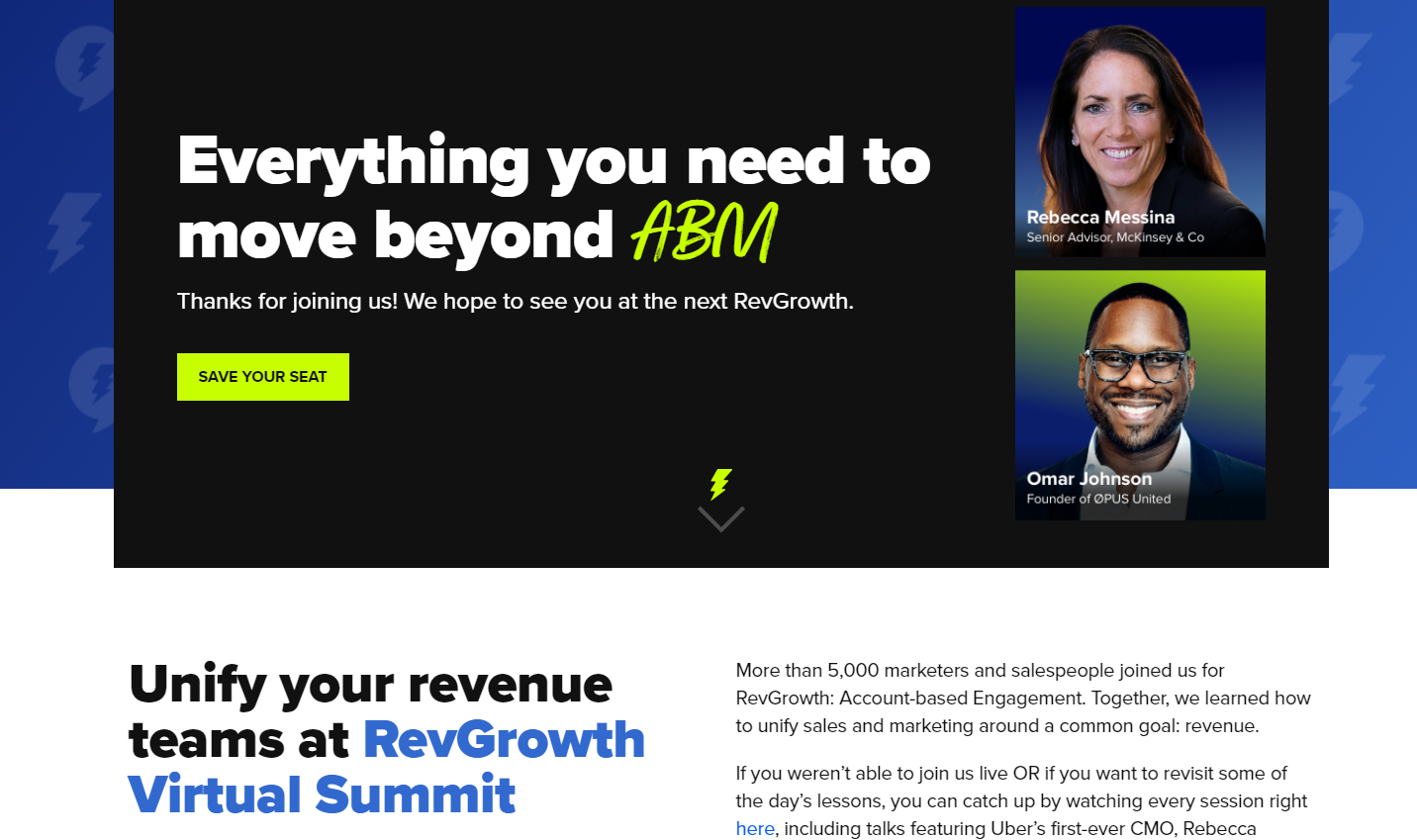 To come up with great themes, we spy on what industry leaders and research companies are talking about. We noticed that BCG was defining account-based engagement as a more accurate way to describe how marketing and sales teams work together to target and close key accounts.
To come up with great themes, we spy on what industry leaders and research companies are talking about. We noticed that BCG was defining account-based engagement as a more accurate way to describe how marketing and sales teams work together to target and close key accounts.
This inspiration guided the content of our most recent RevGrowth.
Curate the Experience on a Single Stage & Condense the Timeline
When you have lots of different stages and options (whether at a live or virtual event), your attendees might feel:
- Overwhelmed
- Fear of missing out (FOMO)
- Like you don’t care if they get everything they need to succeed
But when you curate a virtual experience on one stage, you show your audience that you care about them. That you want them to get the information they need and nothing more.
Not only can this simplicity increase your page’s conversion rate, but it also fosters a better emotional connection with your brand.
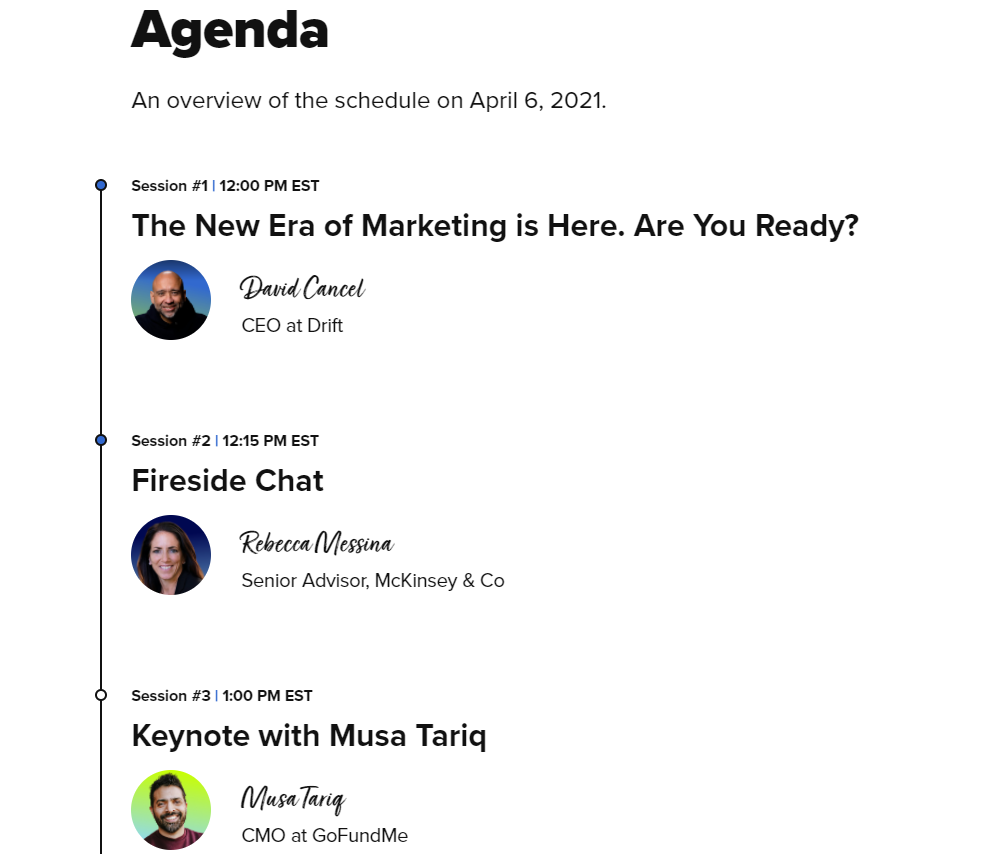
It’s also a good idea to condense the timeline so that you’re not asking for too much. Do you really need to take three days of people’s time?
We like to host RevGrowth in a single afternoon.
Invite the Best Possible Speakers
You want people to feel excited about attending. To do this, you need to offer content that they can’t get anywhere else. And to do that, you have to offer access to people they’re not usually in the same room with.
Gather executives from brands your target audience admires, and consider inviting an influencer or expert as well, to boost reach and clout.
How to Write and Design the Landing Page
Now that the virtual event itself is awesome, it’s a lot easier to craft a high-converting landing page.
Here are the things we always do when launching an event LP.
Look to Your Mentors for Examples
Chances are that the companies you look up to have done some extensive testing and reiterating of their own virtual events landing pages.
Why not seek inspiration?

We peruse event pages from brands we admire for ideas to test ourselves, such as page layout and social proof examples. And sometimes we just come across designs we like and add them to our swipe file.
Get the Driftbot Language Right
We don’t require registrants to fill out a form to attend one of our virtual events. Instead, we fire up a chatbot. This has a massive impact on the conversion rate of all of our pages.
While using a Driftbot will make a noticeable difference, you need great copy to experience the full effect.
We test our chatbot messages and pay attention to what works. For example, we noticed that including the number of days until the event converts much higher than simply stating the date of the event in the chat prompt.

Hype It Up with Social Proof & Authority
Whenever we create a landing page for a virtual event, we’re always asking ourselves how we can add more hype.
Some of our favorite ways include:
- Testimonials from previous attendees
- Logos of our sponsors
- Pictures of previous speakers in action (not just headshots)
- Clearly stating company association for each speaker
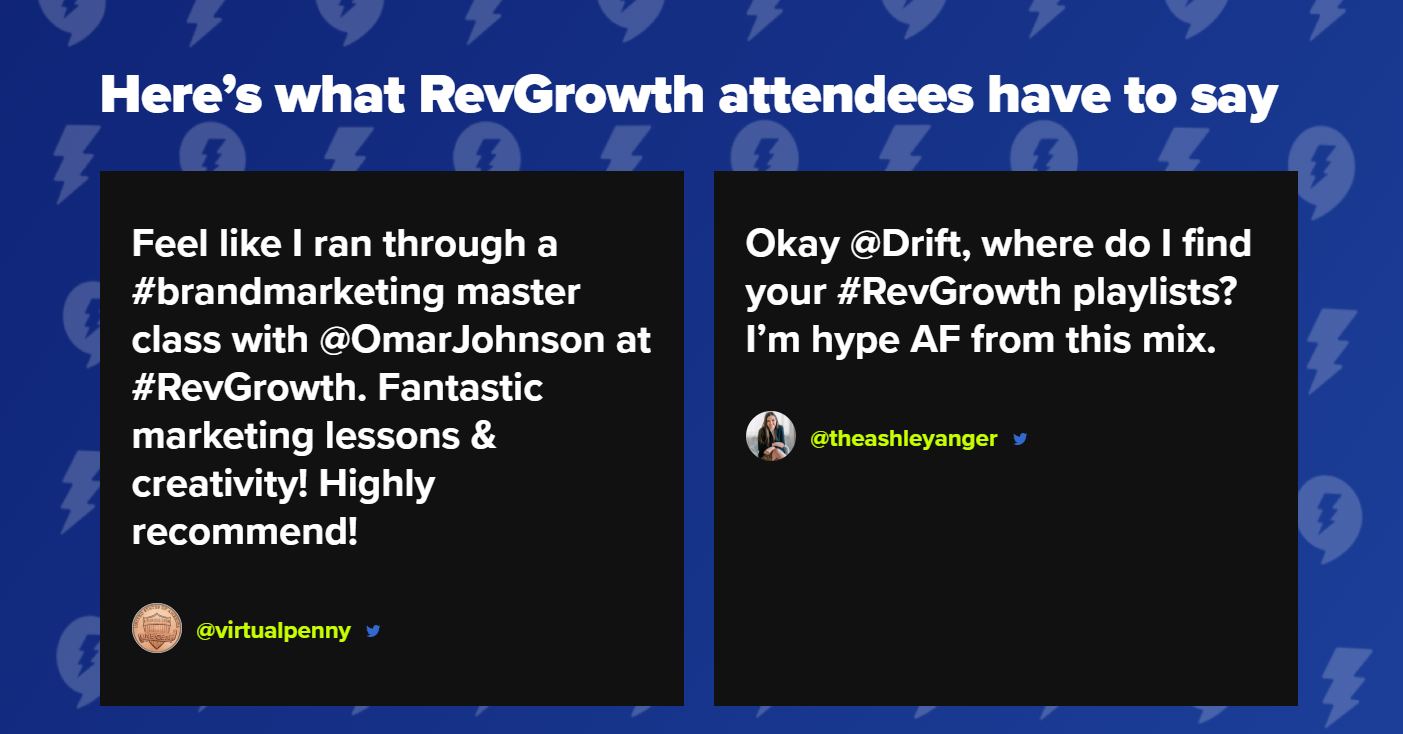
During and after each of your virtual events, scan Twitter and LinkedIn for uses of our hashtag, event name mentions, and brand mentions for testimonials you can use again and again.
Design the Page Around the Rule of Three
Humans love the number three. Three takeaways. Three tips. You get the picture.
We use the rule of three everywhere we can – even in places you might not expect.
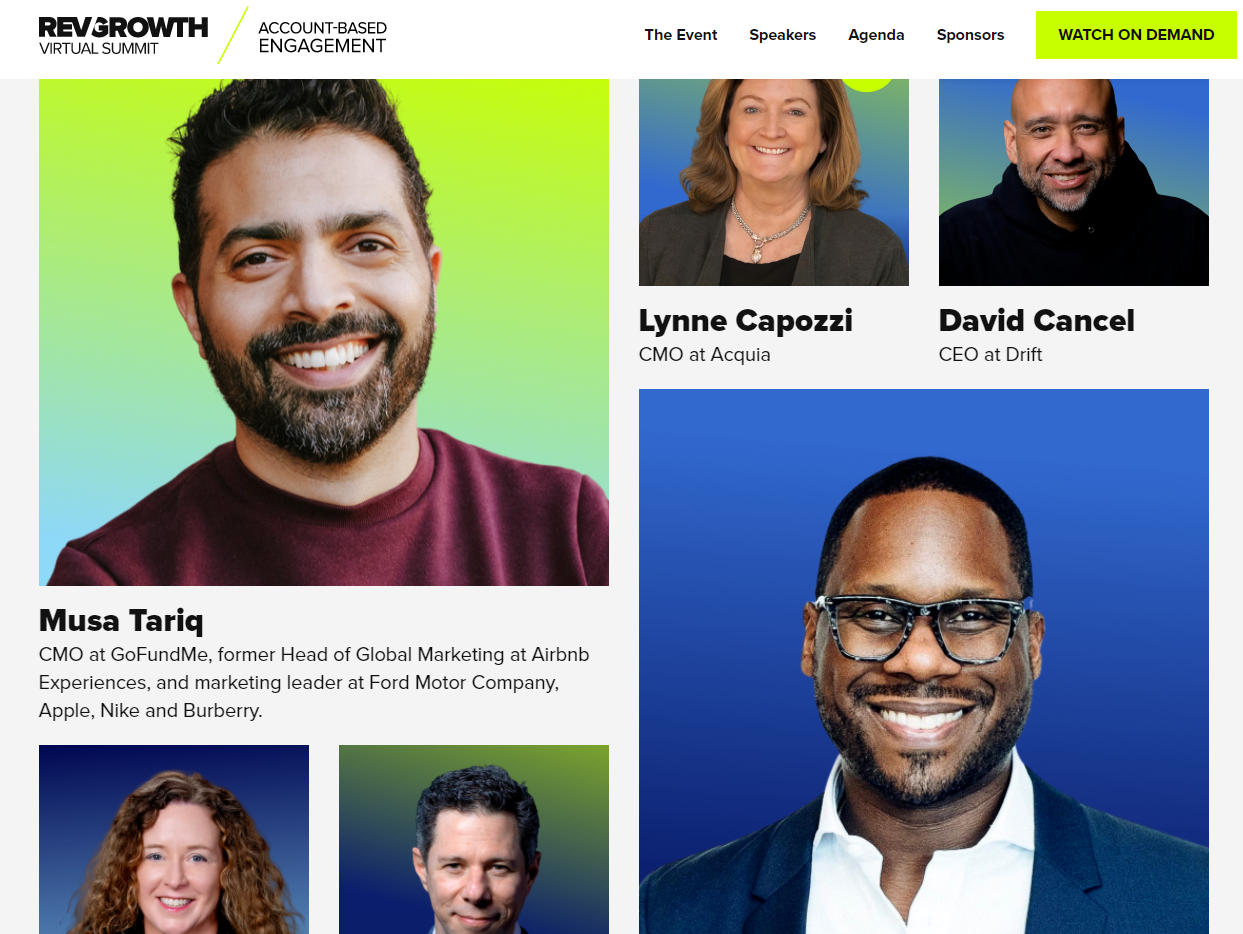
For example, on the desktop version of our recent event landing page, we used the rule of three to make the headshots more interesting and understandable. The human brain takes a better liking to this format than a gallery-style spread of photos.
Run Tests and Document Results in an Events Landing Page Checklist
We keep a running list of everything we test, what works, and what didn’t make the cut. This all gets organized into a continuously evolving checklist of what makes a great landing page.
Our current checklist includes designing and writing by the rule of 3, and making sure we hit all of Robert Cialdini’s six principles of influence:
1️⃣ Reciprocity (be the first to give – you, then me)
2️⃣ Scarcity (the rule of the rare – we love using countdown clocks for this)

3️⃣ Authority (show credentials, background, admit weaknesses, etc. – logos are key here)

4️⃣ Consistency (start small and build)
5️⃣ Liking (making friends, likability – we show liking by showing faces. especially above the fold)
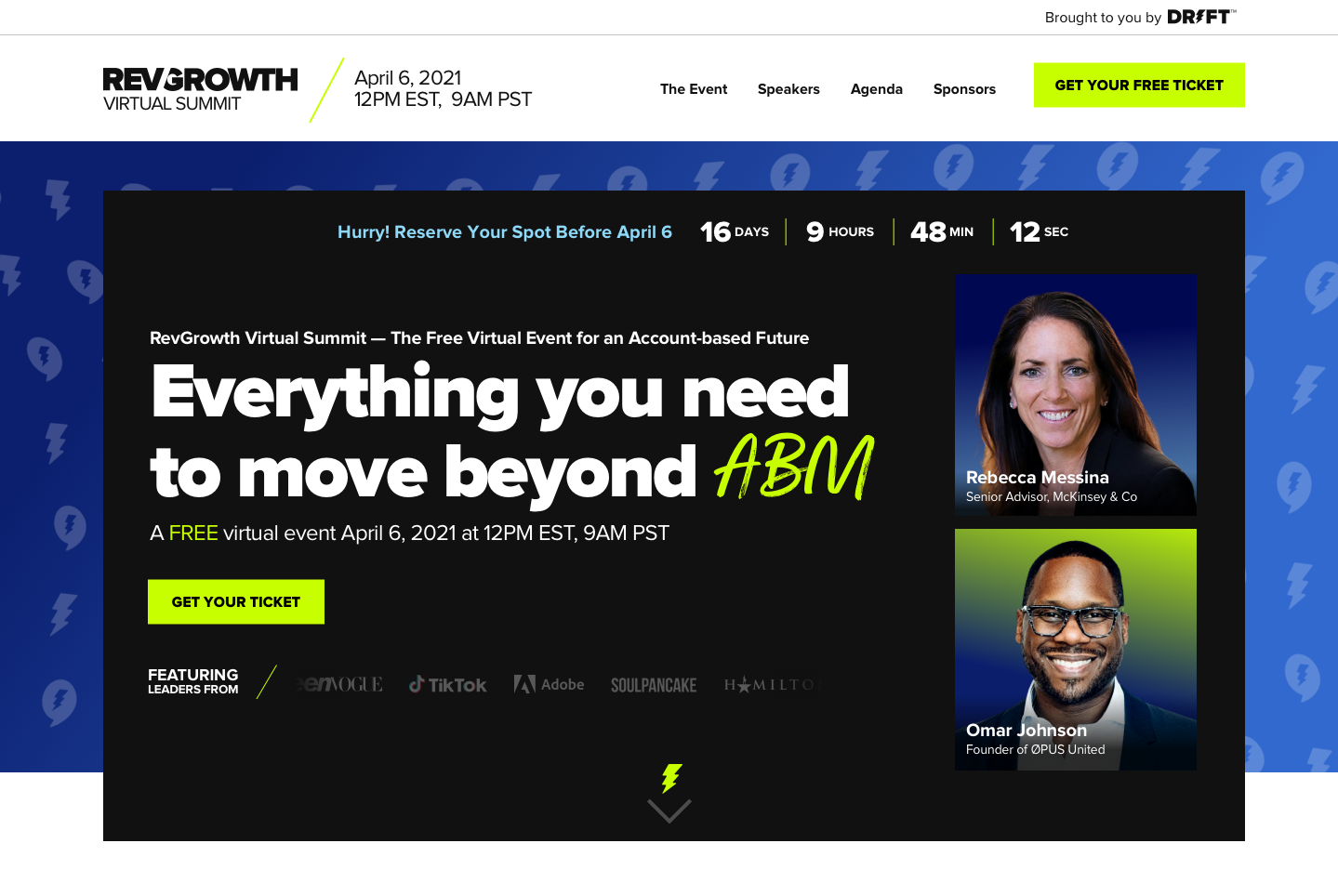
6️⃣ Consensus (social proof, past success, testimonials – peep the 30k attendees number below)

With your page on point, it’s time to drive traffic.
How to Pull in High-Quality Traffic
While there are lots of ways we drive quality traffic to your registration landing page, these are the big winners and the strategies that drive the highest amount of sign-ups.
Send Personalized & Segmented Emails
We segment the emails that we send about our events. And when I say segment – I mean segment. We’re not talking about two or three segments, but rather 12 to 15.
We segment based on persona, behavior score, and what other campaigns they have interacted with in the past. We use this information to tailor the email invitations to their interests and buying stage.
Create LinkedIn Events
We also create LinkedIn events to reach more of the right people. LinkedIn events provide the following benefits:
- Discoverability and searchability
- Personalized recommendations (LinkedIn will recommend events via email and in the My Network tab)
- Share to page followers in a native way that the algorithm likes
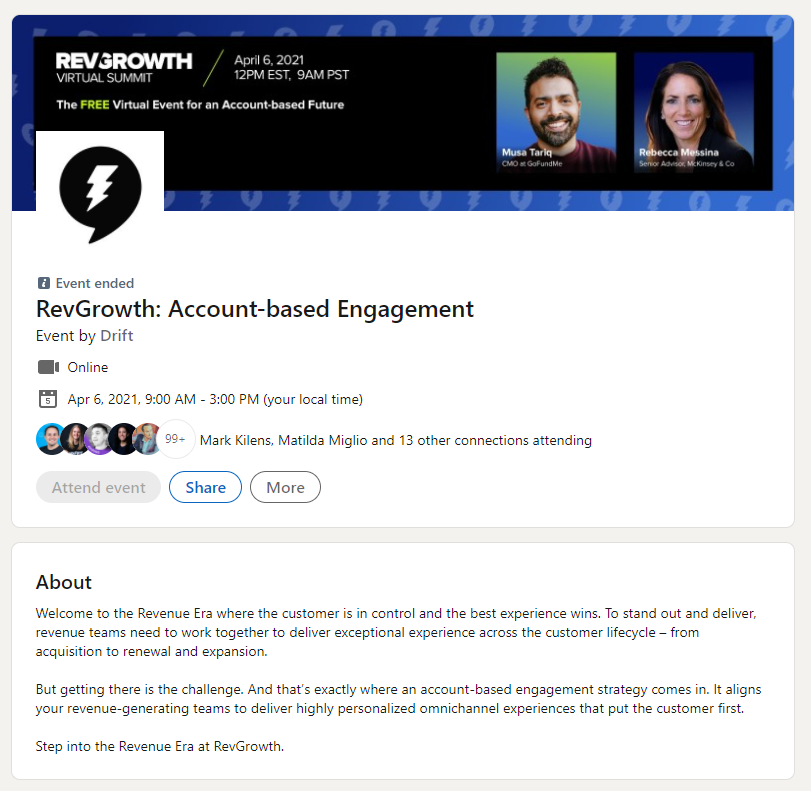
For any event, we might get 10 to 20% of the registrations coming from LinkedIn.
Leverage Partnerships
Partnerships are an amazing source of high-quality traffic for our virtual events. We communicate with partner companies well in advance of the event to help them map out ways they can support us.
We make it easy on them with copy, assets, and strategy sessions.
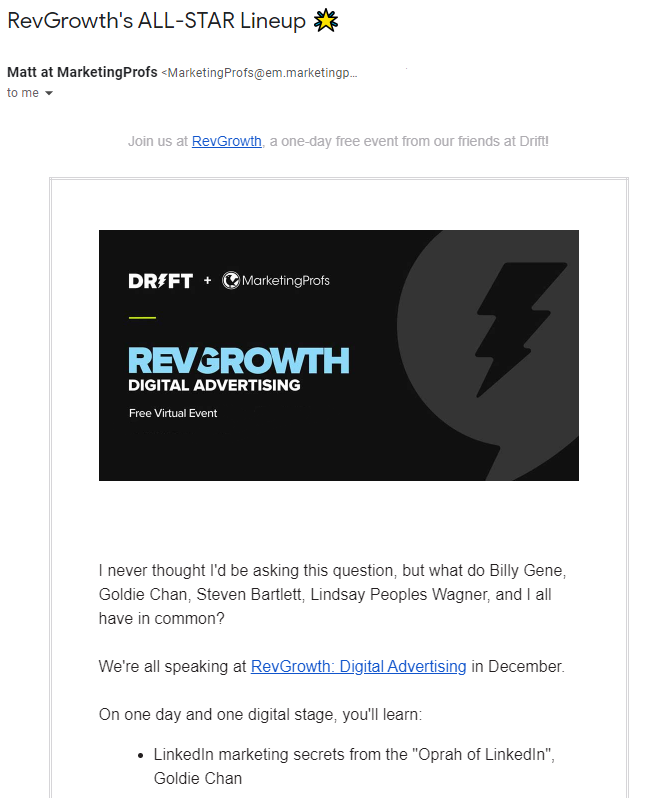
Partnerships can make up a significant part of our registrants, and they can help us ensure that as many registrants as possible match our ICP.
Key Takeaways
To create a high-converting virtual event landing page, you need to make sure the content is desirable and that the page is full of social proof and thoughtful curation.
For best results, drive traffic from places your ICP hangs out. Make sure you don’t just blast out invitations to your leads, but create segments and give their needs careful consideration.





